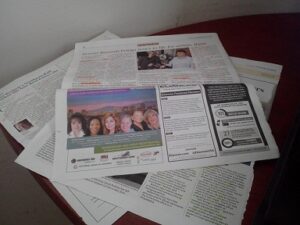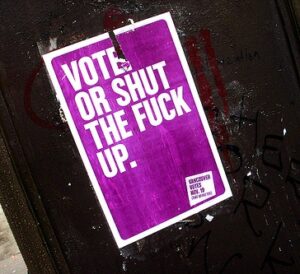I challenged myself last month to take steps to eliminate the paper clutter in my life. Before starting project, I would let papers that needed to be filed pile up on the kitchen counter. If people were coming over, I would move the pile from the kitchen to the bedroom, and about four months later I’d take an hour to sort and file the massive pile of papers.
My project for May 2014 was to deal with every new piece of paper in my life within 24 hours, preferably before I went to bed that night. So here’s how it went.
For the most part, the project was a success. The only papers that sat on my counter for a limited amount of time are bills (that get paid every Friday) and grocery store ads (that get recycled when the next ones arrive in the mail). Many times, the 24-hour rule forced me to file papers I keep within minutes of coming in the door. It was a great habit to solidify. Often times, it was faster to deal with papers right away than when I’d let them pile up.
It wasn’t always easy or successful. Sometimes I go to networking events and I get back to the office with a stack of business cards. It’s time consuming to enter the data from each card into my contact database and there were a few nights I was up late, sometimes painfully tired, getting all the data in before I’d let myself go to bed.

The hardest thing to deal with was newspapers and magazines. I get the Phoenix Business Journal (PBJ) every week and I get a few professional magazines every month as part of my memberships in professional organizations. It’s hard to go through each one within 24 hours of their arrival, and I can’t always predict when they will arrive so I can’t set aside time for them. And I think part of it is a fear that going through each one will take a lot of time – and that’s not necessarily true. Here’s a typical process I go through with each edition of the PBJ:
- Flip through the paper – read the articles that are relevant to my work, skim the rest (or at least read the headlines).
- Highlight the articles that require a follow-up – people I know or people I want to meet
- Tear the pages with highlights out. Recycle the rest.
- Take the highlighted pages to my laptop and send follow up emails. Note the interactions in my database.
I only have to send a few emails per editions, and sometimes it’s zero. Take home lesson: Dealing with these publications (which are filled with ads I don’t read) takes a lot less time than I think. It’s usually less than an hour, significantly less.
I wish I’d made it a bigger priority to clean out my existing files, in particular to take my receipts in Taxes 2014 folder and put them in the Taxes 2014 binder that has dividers to help me stay organized. I started the binder last month and every new receipt goes into it, but there’s a file folder of accumulated receipts that may not get sorted until 2015 when I’m working on next year’s taxes.
So what’s next in my minimalism project? I think it’s my CDs. I have a CD binder full of albums I rarely look at. Some people would say just to chuck it out, because if it’s that important, I’ve already ripped it into my iTunes. I think I’ll go through it one more time, make sure everything’s ripped, keep a few albums I play in the car, and then get rid of the rest.

